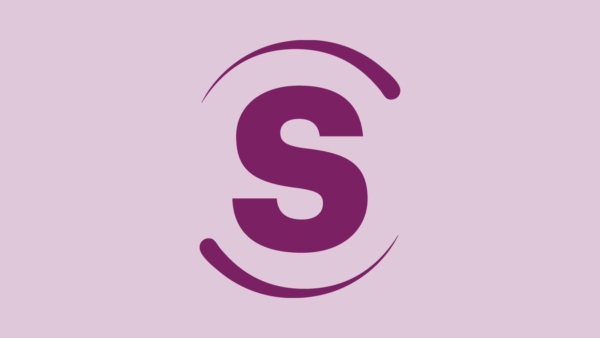Introduction – what is positive psychology?
I first came across Positive Psychology when I was asked to chair a session at a HR conference in the early noughties with a speaker describing themselves as a ‘positive psychologist’ – he was also a columnist for the Times newspaper. I can honestly say that at that time – and I’d been a practicing psychologist for a while at this point – I hadn’t heard of positive psychology. I wondered why I’d been asked to chair the session and to this day I still think it’s because the conference organisers were racking their brains trying to think of a psychologist who was generally quite positive and then they remembered me 😊 Anyway, the speaker got my interest and although I didn’t dive straight into it, I was all ears when a few years later, I got talking to a guy (who went on to become my business partner) about the strengths approach as a great way of applying positive psychology in the workplace. And soon after, we started to develop Strengthscope® In this blog, my aim is to give you a potted history of positive psychology and how it can help you, practically, day to day.
The history of positive psychology – starting in 1998
Although a lot of the core ideas from positive psychology come from way back in history – ancient Greece and ancient China for example – the birth of modern positive psychology is most often associated with Professor Martin Seligman’s presidential address to the American Psychological Association in 1998. I’m actually going to quote from his speech directly because I think it captures the moment perfectly. He said that there were two main areas for psychologists to focus on both now and into the future. When it came to this point in his speech, he said:
“The second area cries out for what I call “positive psychology,” that is, a reoriented science that emphasizes the understanding and building of the most positive qualities of an individual: optimism, courage, work ethic, future-mindedness, interpersonal skill, the capacity for pleasure and insight, and social responsibility. It’s my belief that since the end of World War II, psychology has moved too far away from its original roots, which were to make the lives of all people more fulfilling and productive, and too much toward the important, but not all-important, area of curing mental illness.”
So true – I’d completed my undergrad degree in psychology about 5 years before this speech and in it, there was no mention of positive psychology. In fact, as Professor Seligman said, most of the focus on my degree course was on clinical diagnosis of psychological disorders. I always find it interesting that Seligman himself featured heavily on our reading lists on my course, with his topics of interest being depression and learned helplessness (which is how we give up when we feel we have no control over something). Clearly these are very much focused on psychological disorder and it took Seligman himself to wake up to this fact in order for positive psychology to be born.
The importance of positive psychology – some key concepts
Since 1998, psychology has been on a bit of a journey, sparked in part by Seligman’s presidential address. Seligman’s work has been central to this, but there are many other researchers too, as well as some fields that have developed in parallel to positive psychology, drawing on some of its key concepts.
Pretty soon after Seligman’s first call-out, positive psychology was being defined as “the study of the conditions and processes that contribute to the flourishing or optimal functioning of people, groups, and institutions.” (Gable and Haidt, 2005) and while it’s defined in various ways today, that’s still my fave, although I also like Chris Peterson’s definition which is “The science of what goes right in life.”
I’ll take you through a few of the key concepts of positive psychology now (BTW, I’ll be covering some of these in more depth in future blogs):
Concept of flow in positive psychology
Flow was described by psychologist Mihaly Csikszentmihalyi first in the 1970s as a state of absorption and immersion where your abilities are perfectly matched to the requirements of what you are doing. Flow is rewarding in itself and can lead to experiences of extremely high performance and elation, experienced at the same time. Mismatches of skill vs challenge can lead to overwhelm or boredom depending on the combo and finding more opportunity for flow at work is seen as very worthwhile both for an employee and the organisation. I’ll be writing a separate blog on this and how it can be practically applied at work very soon.
Positive psychology and character strengths
Martin Seligman was the first to describe character strengths in the modern era, using his ‘values in action’ model, which included 24 strengths or virtues. Using these strengths could lead to positive emotional experiences and to positive outcomes in the world. Examples of his strengths are bravery, open-mindedness, love of learning and forgiveness. Later researchers, including us at Strengthscope, have brought strengths into a more work-focused domain and added the element of ‘energy’ as a fundamental part of the definition of a strength. If it energises and you’re good at it, or can become good at it, it’s likely to be a strength.
Types of well being in positive psychology
Well-being is often described as an outcome experienced by people applying positive psychology principles in their lives. Seligman developed a model – his PERMA model – whose application can lead to increased well-being. PERMA is an acronym for positive emotions (which we’ll come onto shortly), engagement (which is basically ‘flow’), relationships (seen as essential to well-being), meaning (having a purpose or direction which transcends day to day life) and accomplishments (the pursuit of success and mastery). Take care of your PERMA, the research shows, and your well-being is likely to improve.
Positive emotions
Experiencing positive emotions like joy, pride, awe, gratitude and excitement have a major beneficial effect on a lot of important outcomes, both at work and in life including improved social relationships, capacity for learning, problem-solving, well-being and motivation for action. This is because experiencing positive emotions broadens our mental state. According to work with nuns by Barbara Fredrickson, regularly experiencing positive emotions can also be life-prolonging. I’ll cover that evidence in another blog.

Positive Organisational Scholarship
This is a whole field of applied research and practice around creating positive organisations where people can thrive, based on the principles of positive psychology including resilience, authentic leadership, meaning, gratitude and a lot of the stuff I’ve already mentioned, but putting it in a workplace context. There’s a great book on it by the same name which is a bit old now but worth grabbing second hand for a fiver if you’re interested, it’s stacked with good thinking and research. It’s edited by Kim Cameron, Jane Dutton and Robert Quinn.
Appreciative Inquiry
AI is a way of approaching change which asks people what works right now, what’s the best of what we have, as a way of collectively creating a clear picture of a future state and then people working together to achieve it. At the heart of it, AI is about asking positively framed questions and focusing on solutions as a means to drive change in a way that people feel bought into rather than where they feel ‘done to’.
5 top tips from positive psychology to help you in your life
There are so many elements of positive psychology that have been proven to be beneficial for people in their personal and work lives. Here are 5 right off the top…
- Take time to experience positive events and journal them
– we spend a lot of time reflecting on negative events but less on positive. To make it easier to recall positive events, be sure to really be there in those positive moments, to savour the moments and emotions so you get better at remembering them when you look back. And journaling can help with this. - Craft your career towards your strengths
– using your strengths more leads to a higher level of self-efficacy (that’s belief that you can do something), creativity and performance in general. When you acknowledge your strengths and do more to use them, you’re going to get much more from work. - Identify when you have experienced moments of flow find ways of increasing the frequency
– when have you been totally immersed in what you were doing and time has done funny things? If you can identify these flow moments, you have better knowledge about how to create more of them by finding opportunities where your skills and the challenge of tasks are matched. - Connect with others
– truly connecting with other people has major mental health and well-being benefits. Particularly after so long of not being in the same room at the same time as others through the pandemic, try and create opportunities to do this more – we humans are wired for it. - Ask yourself positively framed questions when problem-solving
– questions like ‘when have I been successful in the past at something like this?’, ‘what has worked before in similar situations?’ makes a difference to the quality of your problem-solving because it broadens your mental state and allows you to consider a wider range of possibilities and options.
Conclusion – a potted history of positive psychology and a gateway to more
Well that was a pretty intense dash through some of the key aspects of positive psychology, what it is and what it can do for you. I’m looking forward to covering more on several of these topics in coming blogs and also, just so you know, I also do requests. So ask away if there are any burning questions or topics that you’d like me to cover in the future. Just linkedin or insta me – I’m Paul Brewerton, the strengths guy. Till next time, stay strong.












